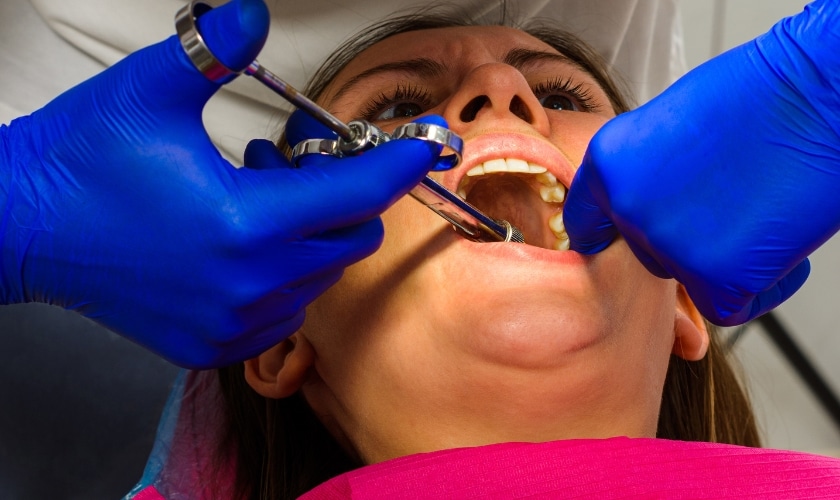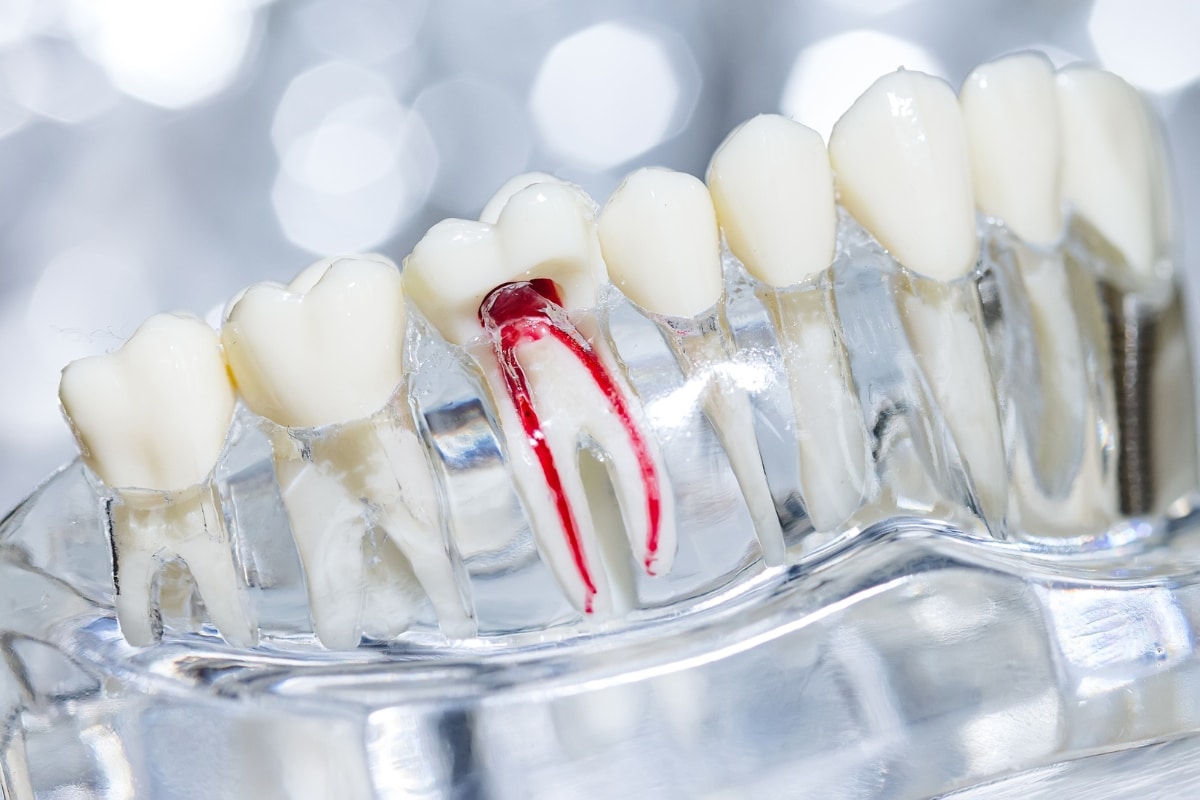
Understanding Local Anesthesia For Tooth Extraction
Toothaches can feel like unwelcome houseguests, but sometimes eviction involves a tooth extraction. While the thought of dental surgery can send shivers down spines, local anesthesia steps in as a knight in shining armor, ensuring a pain-free experience. Local anesthesia, the unsung hero of tooth extraction, is often shrouded in mystery. What exactly is it? How does it work? Should you be worried about needles? In this article, Inland Choice Dental delves deeper into the world of local anesthesia for tooth extraction, answering the questions you didn’t even know you had. We’ll bust common myths, explore less-discussed aspects, and equip you with the knowledge to face your extraction with confidence.
What is Local Anesthesia?
Local anesthesia, as the name suggests, is a form of anesthesia used to numb a specific area of the body, in this case, your mouth. It works by blocking nerve signals in the area where it is administered, providing temporary relief from pain and discomfort during dental procedures such as tooth extraction.
Types of Local Anesthesia for Tooth Extraction:
When it comes to numbing your tooth, your dentist has a diverse toolbox. Here are the most common types of local anesthesia used during tooth extraction:
- Infiltration Anesthesia: This is the most commonly used method, involving a single injection near the base of the tooth. Think of it as a targeted attack on pain in that specific area.
- Block Anesthesia: This method employs multiple injections to numb a larger area, like an entire side of the jaw. It’s like deploying a battalion of numbing agents for more extensive procedures.
- Nerve Block Anesthesia: This targeted injection blocks a specific nerve responsible for pain in a larger area. It’s like snipping the pain wire at its source, ideal for wisdom tooth extraction.
Importance of Local Anesthesia for Tooth Extraction
- Local anesthesia is crucial for a pain-free tooth extraction. It numbs the area, preventing discomfort and anxiety during the procedure.
- The primary purpose is to block pain signals, allowing dentists to work without causing unnecessary pain or stress for patients.
- Beyond numbing, it reduces bleeding, improves visibility for dentists, and promotes faster post-extraction healing.
- Anesthesia gives dentists precision in complex extractions, ensuring better control and ease in removing stubborn or impacted teeth.
- Its use significantly reduces complications like gag reflexes or involuntary movements during the procedure, enhancing overall patient safety.
- Choosing local anesthesia for tooth extraction is highly recommended for effective pain relief and improved patient comfort, minimizing the risks associated with dental interventions.
Benefits of Using Local Anesthesia for Tooth Extraction:
- Painless Procedure: Local anesthesia effectively numbs the extraction area, ensuring a nearly painless tooth removal experience for patients.
- Minimal Downtime: Unlike general anesthesia, local anesthesia allows for quicker recovery times, enabling patients to resume normal activities shortly after the dental procedure.
- Reduced Anxiety: By numbing the area before dental work begins, local anesthesia helps alleviate anxiety and fear associated with dental procedures.
Risks of Using Local Anesthesia for Tooth Extraction:
- Temporary Numbness or Tingling: Possible side effects include temporary sensations like numbness or tingling in surrounding tissues after the anesthesia wears off.
- Swelling and Bruising: Some patients may experience swelling at the injection site or bruising, although these effects are generally mild and temporary.
- Allergic Reactions (Rare): In rare cases, patients may have allergic reactions to local anesthetics, underscoring the importance of discussing known allergies with the dentist.
Local Anesthesia vs. General Anesthesia:
- Local Anesthesia: You remain awake and aware throughout the procedure, experiencing only pressure rather than pain. Ideal for simple extractions and patients with good anxiety management.
- General Anesthesia: You’re completely asleep and unaware of the procedure. Preferred for complex extractions or patients with severe anxiety or medical conditions.
Beyond the Basics:
Some local anesthetics contain epinephrine, which constricts blood vessels and prolongs the numbing effect. However, it’s not suitable for everyone, especially those with high blood pressure or certain heart conditions. While local anesthesia numbs the area during the procedure, discomfort might arise afterwards. Your dentist can prescribe pain medication to manage this, ensuring a smooth recovery. Beyond the physical numbing, local anesthesia can provide psychological comfort. Knowing you won’t feel pain can significantly reduce anxiety and make the entire experience less stressful.
According to the American Dental Association, over 10.2 million wisdom teeth extractions are performed annually in the United States alone. Local anesthesia is used in over 95% of these procedures, highlighting its effectiveness and safety. Lidocaine, the most common local anesthetic used, has a 98% success rate in achieving complete numbness. Only 1–2% of patients experience inadequate pain relief with local anesthesia. Around 70% of patients report feeling no pain during the extraction with local anesthesia alone.
The Recovery Process:
After the extraction, the numbness gradually wears off, usually within 2-4 hours. During this time, it’s crucial to follow your dentist’s instructions for pain management and care. This may include:
- Applying ice packs to reduce swelling.
- Taking over-the-counter pain medication as prescribed.
- Avoiding strenuous activities that could increase bleeding.
- Maintaining good oral hygiene to prevent infection.
Following these steps ensures a smooth recovery and minimizes discomfort.
FAQs
Q: What if I’m afraid of needles?
A: Dentists understand this fear and offer options like topical numbing creams to ease the discomfort of the injection.
Q: Will I feel pressure during the extraction?
A: Yes, you might feel pressure as the dentist loosens the tooth, but you shouldn’t feel any pain.
Q: Can I eat or drink after the extraction?
A: Avoid hot liquids and solid foods for a few hours until the numbness wears off. Stick to soft, cool foods and plenty of fluids.
Q: What if the numbness doesn’t wear off?
A: Contact your dentist if the numbness persists for more than 6 hours, especially if accompanied by other symptoms like swelling or fever.
At Inland Choice Dental, we understand that dental procedures can be stressful. That’s why we prioritize patient comfort and communication every step of the way. Our experienced dentists are experts in administering local anesthesia and ensuring a smooth extraction experience. We also offer a variety of sedation options for patients who need additional anxiety relief.




